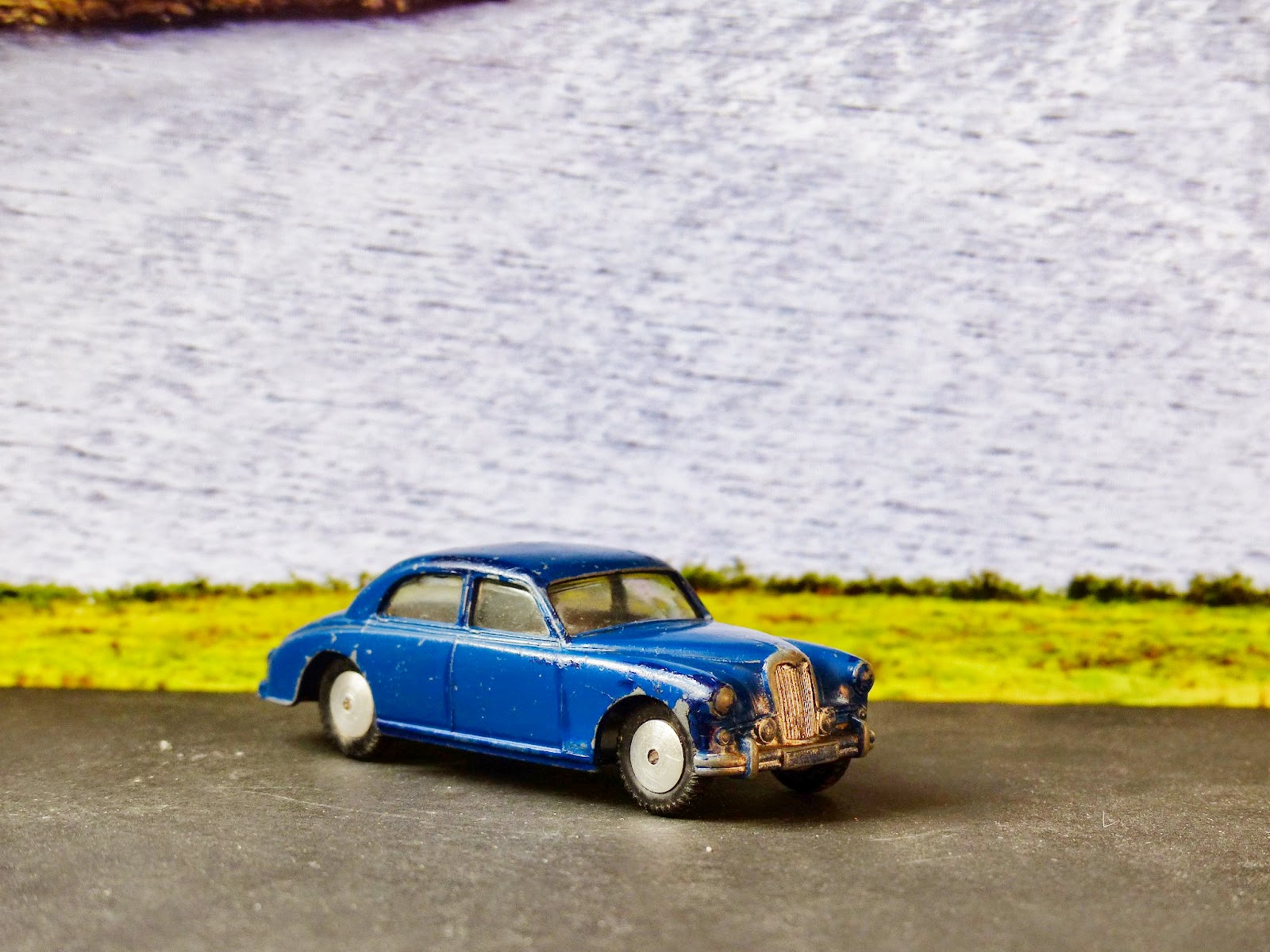I don't think the Rover 90 was the most popular of the 1956 range of first Corgi Toys and this example in utilitarian green with a 'Mechanical' motor was even less so. It was not something I remember anyone having or remarking that they really must get one.
Whilst the side profile looks right the front certainly isn't! That may have had something to do with the poor sales too. I had a very similar Rover 100 in 1972 that was a 1958 model - the side lights are in a different position and mine didn't have the 'Cyclops' lamp in the grill but the model still has something wrong about it.
These very early Corgis look a bit boring with their dull colours and lack of features. A Ford Consul, Vauxhall Velox, Austin Cambridge and Standard Vanguard weren't the most desirable of motors either but the Riley Pathfinder was super and made up for the common others.
The Vauxhall is a lot brighter in a brave red colour. All these models illustrated are the rare 'Mechanical' versions and the motors still just work if you're careful. At not far off 60 years old now they have survived well and it would be a sin to do anything other than keep them clean from here on. There are one or two nice looking versions available but most are fetching terribly high prices. I am happy to get an original model with a bit of paint and with windows and wheels intact.
According to some lists I have prepared, the Austin Cambridge with a Mechanical motor has one of the lowest sales figures of all Corgi models at a very precise 10202. That may be a misprint as the others are all in the 100000 region and I can't see any reason why that one should be so much less. The prices, while high, are not significantly different either, varying more with condition than model.
The top one is #201M and in pretty poor condition, mostly due to the windows being badly scarred. The bottom one has much better perspex and a bit more paint but is just a #201.
Here's #206M, a Hillman Husky which looks as if it ought to be a hatchback but wasn't. It's a short Hillman Minx and you do have to wonder why on Earth anyone would buy a Husky when they could have a Minx. Maybe there was a big price difference, although there wouldn't be much justification as each had the same engines and most of the insides were shared.
I have featured #208M, the Jaguar 2.4 S Type before. It is a strange-looking model in most colours but works well in blue and this one is in jolly good condition.
There is a Ford Consul 200M, a Morris Cowley #202M, a #207M Standard Vanguard and a #216M Autin A40 needed to complete the British saloons. They are not easy to track down unless you want to pay several hundred pounds. Oddly, the pristine, shiny and carefully photographed standing on a box examples that I've seen do little for me at all and I certainly am not inclined to fork out a month's rent on any of them. They just look too bright and it's almost as if I have to have a dull, used-looking one for some reason - and not just price. Those MIB affairs are anaemic and devoid of character in a way that I don't feel applies to later models. A mint #210 Citroen DS19, for instance, from 1957 would be great to have. Perhaps it's the colours they produced the others in that look so strange when so clean. I don't know, but I am sure I'll get over it and and if a shiny new pale green and red Standard Vanguard comes along I won't turn it away!
Two American cars joined the M range for a brief period - the Studebaker Golden Hawk #211M and #214M Ford Thunderbird - and I'm searching for examples of these.
Completing the M range were three Bedford vans, a KLG Plugs advertising one, a Personnel Carrier and a Fire Department van. I have the first but the other two are on my search list. They are really not the most attractive of models but their scarcity makes them quite desirable!











No comments:
Post a Comment